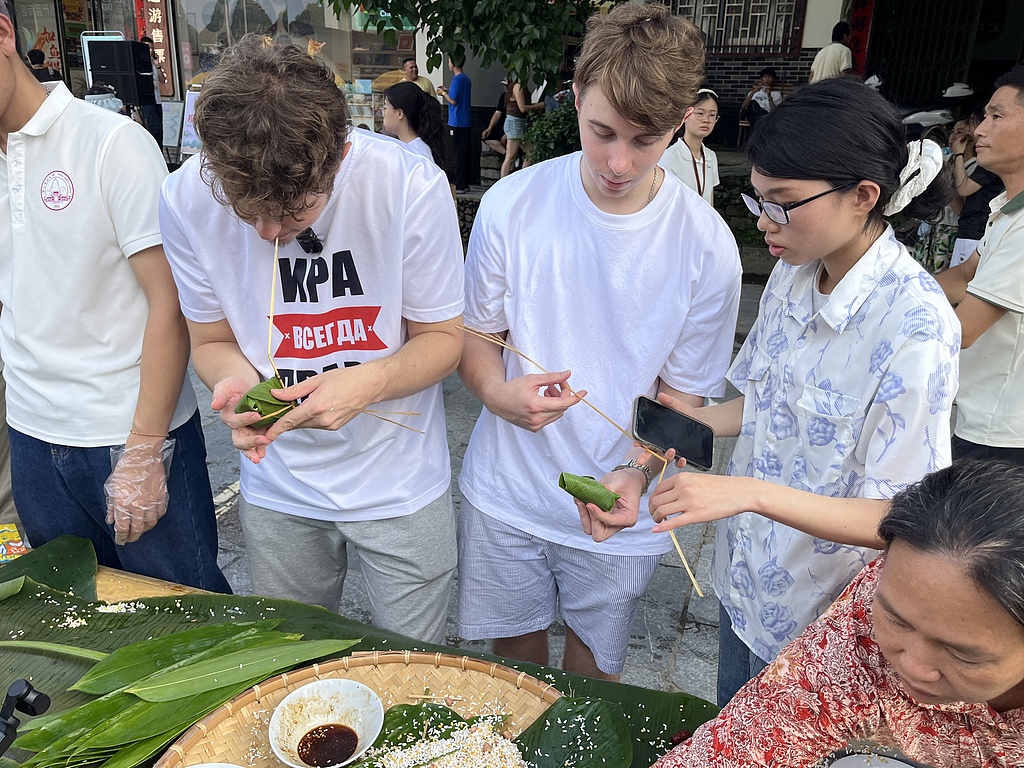Dragon Boat Festival Sparks Significant Rise in China's Holiday Spending Amid Cultural Celebrations
Dragon Boat Festival holiday sparks record-breaking 657 million cross-region trips, fueling China's tourism and consumption boom


With more than 657 million cross-region trips projected nationwide, the recently concluded three-day Dragon Boat Festival holiday was about much more than commemorating ancient legends—it has become a driving force for China's booming tourism and consumer sectors. The annual event, known for its blend of tradition and festivity, showcased how time-honored customs are being adapted to fuel economic growth and create new experiences for millions.
From drums to zongzi: A festival reimagined
In Beijing’s Tongzhou District, the 2025 Grand Canal Dragon Boat Carnival burst into vibrant life as thirty-two teams from the capital, Hebei, and Guangdong Province fiercely raced through the reflecting waters of the ancient canal. The crowd watched in awe as synchronized paddlers, driven onward by thundering drumbeats, surged toward the finish line. One highlight was the Lingnan team from the south, who stunned onlookers with deftly executed dragon boat drifting skills—twisting sharply and spinning their vessels in full circles, a spectacle that drew waves of applause from both banks of the waterway.
Far from just a race, the carnival also featured quirky competitions, such as paddle board races, dragon boat tug-of-war, and arm-wrestling contests. Social media buzzed with light-hearted banter about the different regional styles: Northern races often see exhilarated crews tumbling into the water, while southern teams race with clockwork precision. "Northern races are about keeping Qu Yuan company," joked one post, nodding to the ancient poet whose legend is at the festival’s heart.
According to legend, Qu Yuan, a revered poet and official from the Warring States period, ended his life in the Miluo River following the fall of his homeland. His countrymen rushed in boats to save him or recover his body, throwing zongzi—glutinous rice parcels—into the river to keep fish from disturbing him. This tale remains central to the holiday, but its modern celebrations have taken on new flavors, both literally and figuratively.

This year, zongzi varieties exploded in both creativity and popularity. In Chengdu’s Jinniu District, food stalls on Maan East Road drew crowds with avant-garde takes on the classic treat—from chocolate and pineapple to a colossal, family-size zongzi weighing up to 1.5 kilograms and filled with pork belly and seven salted duck eggs. “Sharing a giant zongzi brings people together,” one vendor explained, noting the strong demand for both novelty and nostalgia.
The global reach of the Dragon Boat Festival is also expanding rapidly. An innovative zongzi company from Zhejiang collaborated with Chinese students at Oxford University to stream live dumpling-making tutorials and cultural lessons for overseas audiences. “We want to showcase the craftsmanship of zongzi, our traceable ingredients, and the festival’s story,” said Shen Qian, a manager at the firm. This year, their zongzi found new fans in supermarkets and on e-commerce platforms from Cambodia to South Korea and even Canada, where they proved especially popular.
Tourism gets a cultural makeover
The surge in domestic travel over the holiday marked a notable shift toward immersive cultural experiences. According to travel data, interest in hands-on activities like dragon boat racing and zongzi workshops soared by 105 percent over last year. The overlap with Children’s Day further fueled a boom in family travel; bookings for theme parks more than doubled, and demand for hotel packages and camping adventures also reached record highs.

These trends reflect a transformation in what Chinese travelers expect from holidays: not simply sightseeing, but meaningful engagement. Scenic destinations are evolving in response. At Henan’s Yuntai Mountain, for instance, tourism now incorporates classes in Jiaotai porcelain making—an art form dating to the Tang Dynasty. Visitors can fashion mugs and teacups alongside local artisans, generating income for nearby villages and reviving ancient crafts.
Adventurous tourists took advantage of paddle boarding, cliffside rail climbing, and dramatic jungle roller coasters—activities made possible by the mountain’s rugged landscape. Since extending ticket validity to encourage longer visits, and investing in rural homestay upgrades since 2019, authorities have seen local economies blossom. Full-service homestays now offer fruit-picking, handicraft workshops, and even stargazing camps, inviting urban guests to slow down and savor village life.
According to Li Shipeng, Party secretary of Yuntai Mountain Township, Anshang Town now generates over 50 million yuan (about $6.9 million) annually and sustains more than 700 jobs. The thriving hospitality sector has pushed the township’s per capita income above 62,000 yuan, illustrating how China’s unique blend of tradition and innovation continues to drive both cultural pride and economic opportunity.
Editor: Yang Xuemin




